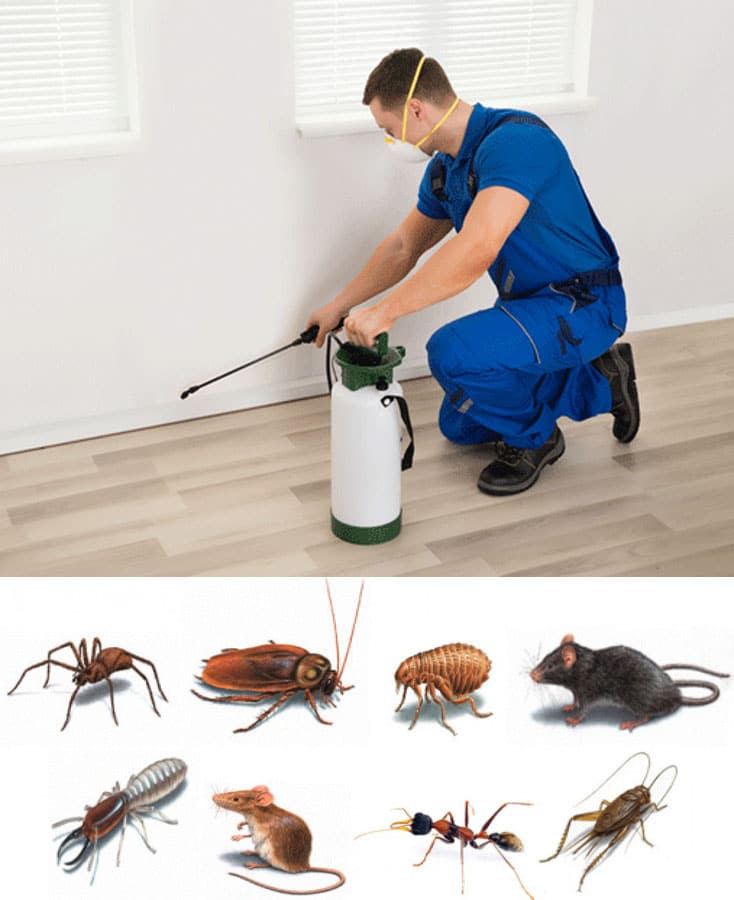Trusted A1 Bed Bug Exterminator Charlotte - Eliminate Bed Bugs Quick
Trusted A1 Bed Bug Exterminator Charlotte - Eliminate Bed Bugs Quick
Blog Article
Bed Insect Therapy Malfunction: Contrasting Chemical Vs. Non-Chemical Solutions
In the realm of bug control, specifically when dealing with the relentless problem of bed insects, the option in between chemical and non-chemical therapy solutions can be a pivotal one. Both approaches use distinct benefits and drawbacks, affecting aspects such as effectiveness, security considerations, and total cost. By taking a look at the nuanced information of each method, a more clear understanding of which course to go after in attending to a bed insect problem can be attained.
Efficiency of Chemical Therapies
Chemical therapies for bed bug infestations have actually been widely recognized for their powerful and quick effectiveness in eradicating these insects. When considering the effectiveness of chemical treatments, it is vital to recognize that they can give a quick and complete option to a bed insect issue. Expert pest control men usually count on insecticides to target bed insects at various phases of their life process, consisting of grownups, nymphs, and eggs. These chemicals normally function by interrupting the bed pests' nerves, leading to paralysis and ultimate fatality.
Moreover, chemical treatments have the benefit of offering residual impacts, implying that they can remain to get rid of bed bugs also after the first application. This residual activity is specifically beneficial in combating any potential re-infestations. Furthermore, the fast action of chemical treatments can bring alleviation to people facing serious bed insect infestations, allowing them to reclaim control of their space promptly.
Security Issues With Chemical Solutions
One vital facet that requires mindful consideration when making use of chemical options for bed insect therapy is making sure the safety of residents and the environment. Exposure to specific chemicals utilized in bed bug therapies can lead to respiratory system concerns, skin irritation, or various other unfavorable reactions, particularly in individuals with pre-existing problems or sensitivities.
Additionally, the ecological influence of chemical remedies is one more substantial factor to consider. Some pesticides used in bed pest treatments may be dangerous to advantageous pests, wild animals, and environments if they leach into the soil or water supply. It is necessary to use chemical treatments judiciously, complying with security guidelines, and considering much less hazardous choices to minimize these risks and guarantee the safe and reliable monitoring of bed pest infestations.
Benefits of Non-Chemical Approaches
Taking into consideration the possible safety and security issues and ecological effect linked with chemical solutions for bed bug therapy, exploring non-chemical techniques presents a promising option with a number of unique benefits. Non-chemical methods use a much safer option for families, especially those with kids, pets, or people delicate to extreme chemicals. These techniques eliminate the dangers of exposure to toxic compounds, reducing the possibility for unfavorable health and wellness impacts. Additionally, non-chemical therapies are environmentally friendly, as they do not contribute to air or water pollution, making them a sustainable choice for insect control.
Additionally, non-chemical services can be efficient in targeting bed insects, including hard-to-reach locations where chemical therapies may not pass through - A1 bed bug exterminator charlotte. Techniques such as warmth treatment, vacuuming, vapor cleaning, and bed mattress encasements provide extensive eradication without the usage of unsafe chemicals.
Limitations of Non-Chemical Treatments

Additionally, non-chemical therapies usually require numerous applications to achieve effective elimination. This can be time-consuming and may not constantly assure complete removal of all bed insects and their eggs, specifically in hard-to-reach or concealed locations.
In addition, the success of non-chemical therapies greatly relies upon proper application and thoroughness, which can be challenging for individuals without professional proficiency. Poor application of non-chemical approaches may result in incomplete elimination, causing relentless invasions and the need for extra treatments.
Therefore, while non-chemical therapies have their advantages, it is vital to recognize these limitations and consider them when determining one of the most effective strategy for handling bed bug problems.
Cost Contrast: Chemical Vs. Non-Chemical Options
Given the constraints connected with non-chemical therapies, a necessary element to assess in the context of bed pest administration is the cost comparison between chemical and non-chemical choices. Chemical therapies usually entail the application of pesticides by professionals, which can vary from $250 to $900 per area, depending on the extent of the problem and the size of the area to be dealt with. On the other hand, non-chemical treatments like heat therapy or steam can be much useful site more costly, with costs ranging from $1,000 to $6,000 for a whole home. While the preliminary cost of chemical treatments may appear lower, several treatments might be required to completely get rid of the infestation, potentially boosting the general price. On the other hand, non-chemical options might provide a much more lasting and eco-friendly service, although they can be cost-prohibitive for some people. Eventually, when taking into consideration the expense of bed bug treatment options, it is necessary to evaluate the upfront expenditures against the performance and long-term sustainability of the selected technique.
Verdict

Considering the possible safety and security worries and ecological influence connected with chemical options for bed this contact form insect therapy, discovering non-chemical methods provides an appealing option with several unique advantages.Given the constraints linked with non-chemical therapies, a necessary aspect to examine in the context of bed pest monitoring is the price comparison between chemical and non-chemical choices. In comparison, non-chemical treatments like warmth therapy or vapor can be much more pricey, with costs varying from $1,000 to $6,000 helpful resources for a whole home. While the first cost of chemical treatments may appear reduced, numerous therapies might be required to fully remove the problem, possibly raising the total expense.In conclusion, when comparing chemical and non-chemical bed insect therapy options, it is necessary to think about effectiveness, safety and security, benefits, limitations, and expense.
Report this page